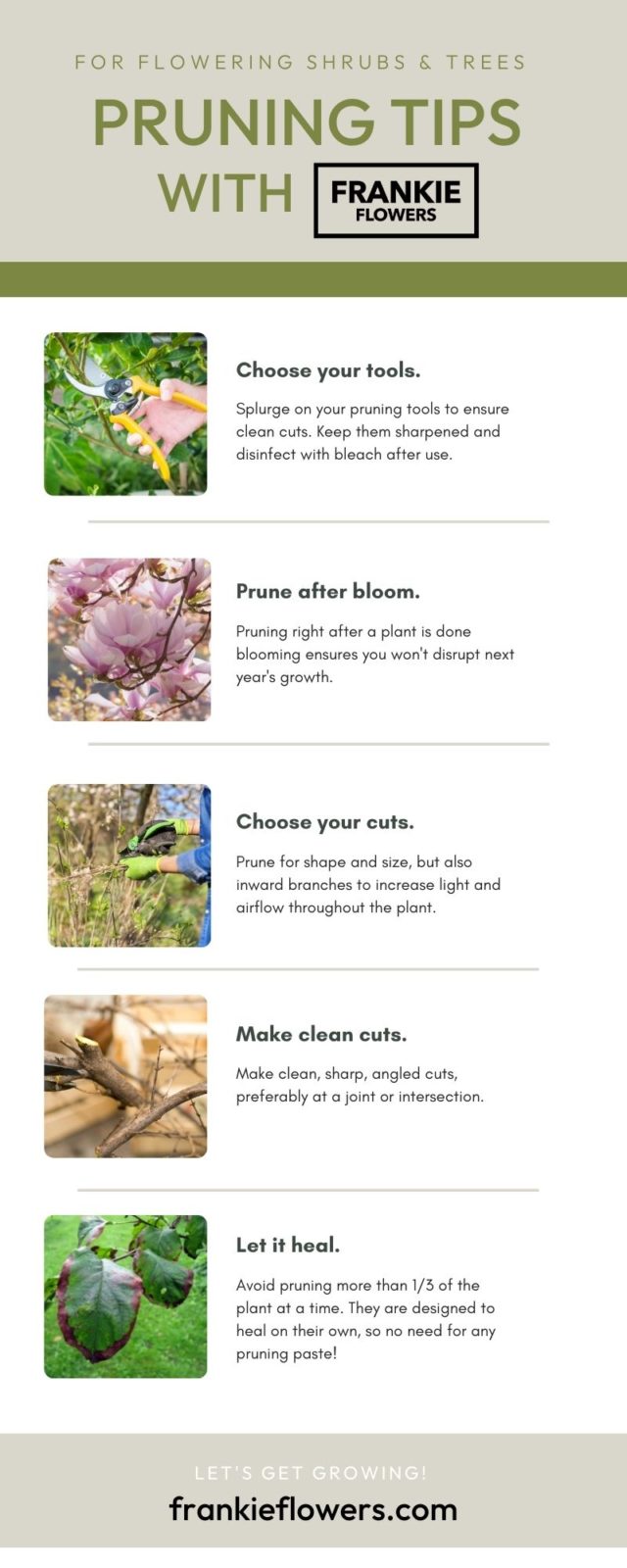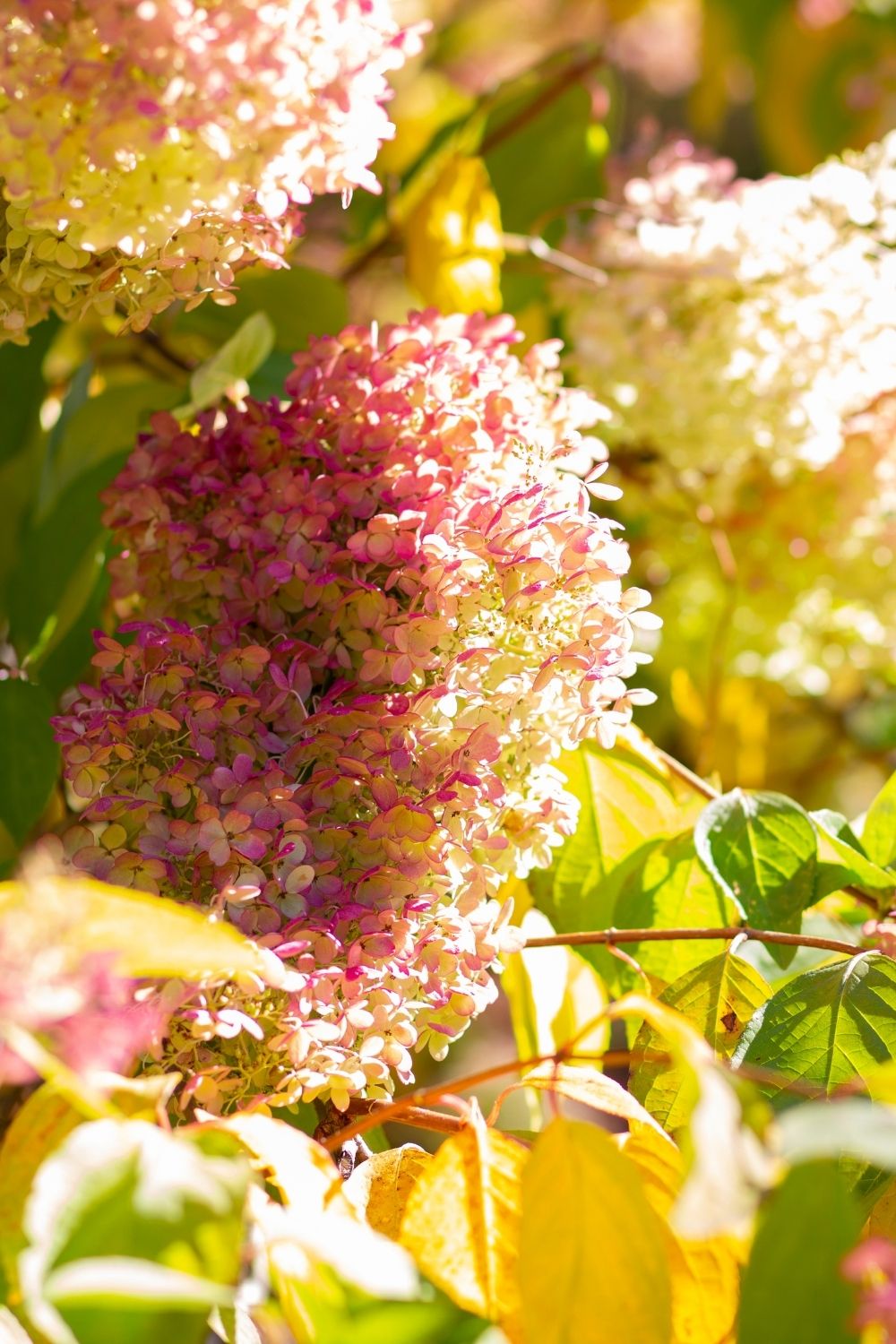3 Simple & Easy Pruning Tips for Beautiful Flowering Shrubs
Pruning your plants helps keep them healthy and strong. Selective trimming removes diseased branches, helps control the size and shape, encourages new growth, and improves airflow. Proper pruning helps your flowering shrubs stay healthy and happy to produce beautiful blooms every season.
With a few simple tips and my golden rule of “prune after bloom,” you can quickly learn how to prune shrubs and trees for a beautiful, healthy garden!

Signs it’s Time to Prune Your Plants.
Broken, weak, or diseased branches.
If you trim these as soon as you see them, you will keep your trees and shrubs healthy and avoid damage to people or property from fallen branches. You don’t want your plant expending energy on an injured part, and open wounds invite further problems.
Misshapen trees or shrubs.
Pruning malformed plants isn’t just for aesthetics but also safety. Uneven weight distribution can lead to broken and falling branches.
Too much growth.
If your plants are taking over and growing too quickly, you’ll want to keep them trimmed to ensure proper spacing and airflow. (But trying to get a plant to ‘fit’ into a spot that’s too small is like trying to make a young child sit still!)
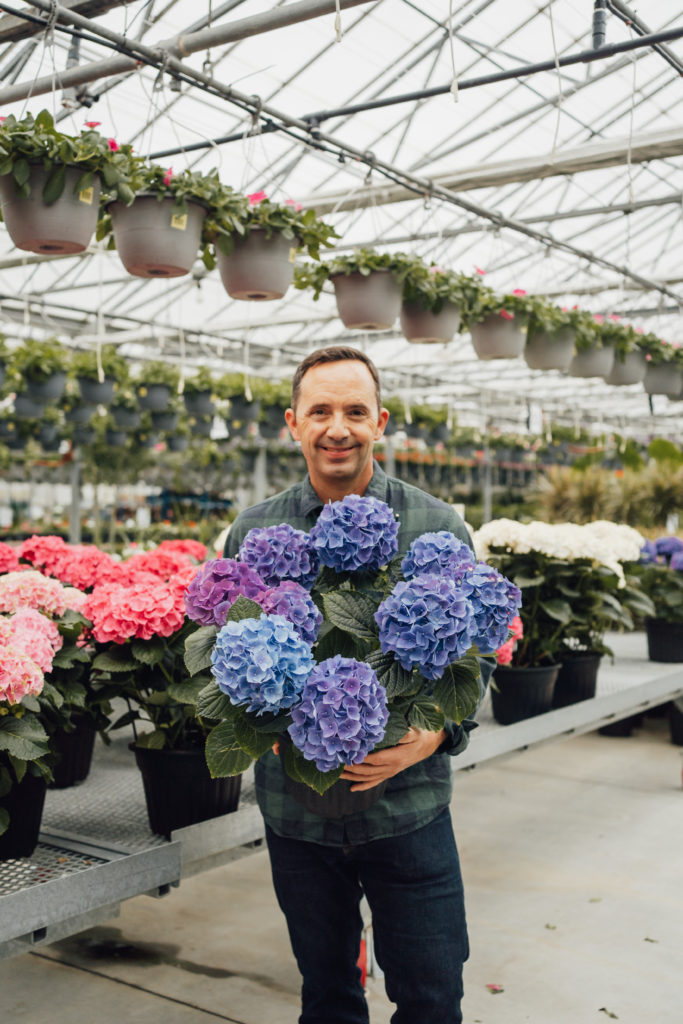
5 Plants to Prune Every Year
Some plants require only an occasional snip to remove dead branches or improve their shape. Others, such as these 5, need annual pruning to thrive:
- Limelights hydrangea
- Common lilac
- Purple sandcherry
- Pyramidal evergreens
- Boxwood



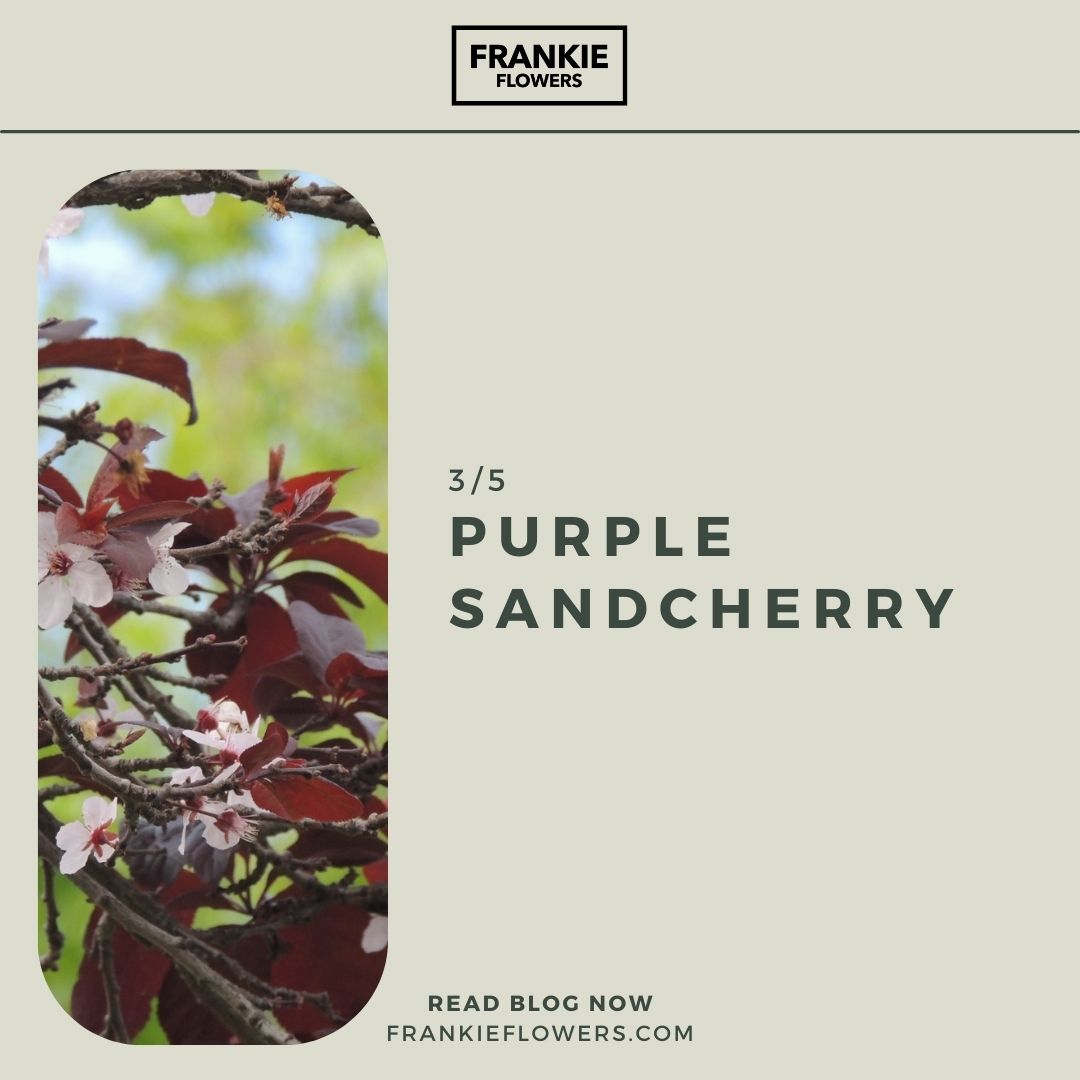


3 Simple & Easy Pruning Tips
Use the right tool for the job!
Base your tools on the size of the project at hand. Small, handheld shears are perfect for small shrubs and bushes, while larger branches may require loppers or telescopic pole pruners.
I love money-saving tips, but this is a time to splurge! High-quality pruning tools are worth the investment. Ensure your instruments are sharpened and clean before cutting back plants to avoid damage.
Dirty pruners can spread disease, and rough cuts leave your plant vulnerable to bacteria. Always bleach your tools after cutting any diseased branches to avoid cross-contamination.
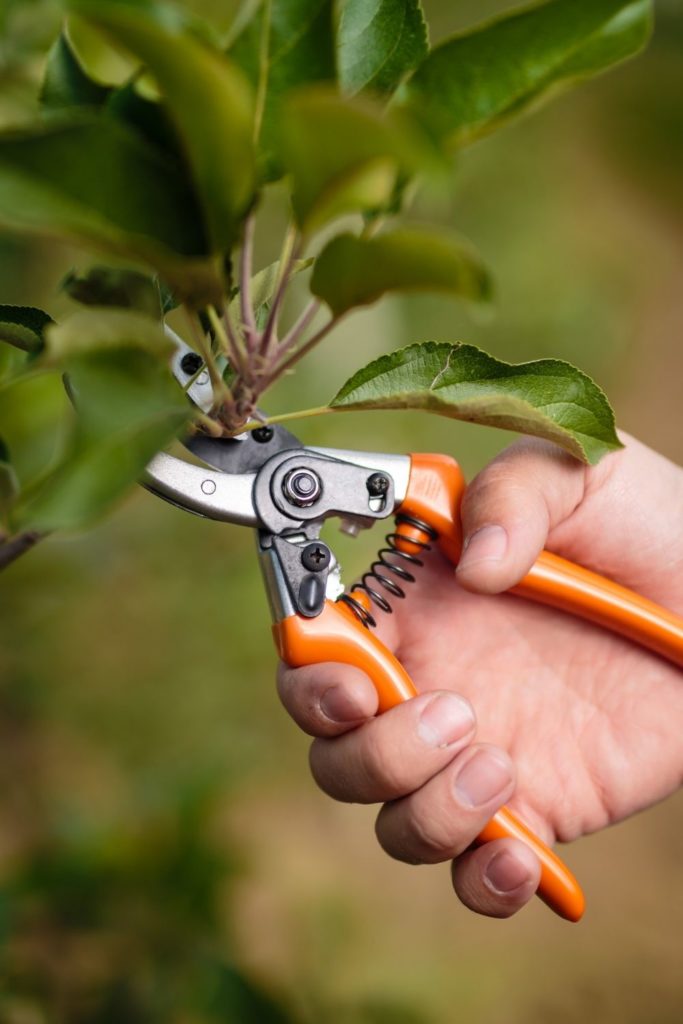
Prune at the right time.
Proper pruning is all about timing. Pruning at the wrong time is the main reason your flowering shrubs will fail to bloom. When to prune depends on the type of tree or shrub – as a general rule of thumb, I always recommend you “prune after bloom” immediately after the plant has flowered.
Early spring is a time for pruning hydrangeas, raspberries, and other plants that flower or bear fruit on new wood.
Others, such as lilacs and rhododendrons, bloom on last year’s growth and should be pruned right after they flower. Because they take an entire season to grow new branches, you’ll remove the blooms preparing for next spring if you prune too late in the season.

Choose your cuts wisely.
Start by removing jagged areas, broken stems, or diseased branches. Cut back either to live wood or right to the ground, depending on the extent of the damage. Make clean angled cuts, preferably at a joint or intersection.
Prune back old, woody stems, inward-growing branches, and deadhead any old blooms. Think about the shape of your plant when pruning for aesthetics and to ensure even weight distribution.
Once you’ve cut, leave your plant to heal naturally – no need for pruning paste! (Studies have shown it can increase healing time). Avoid cutting back any more than one-third of the plant at a time to avoid placing it under stress.
Flowering shrubs and trees are incredible additions to your garden. Knowing how to prune your plants is another tool in your gardening belt that will keep your gardens healthy and thriving!
Thanks for being here! Good luck growing!
Frankie
